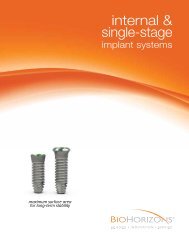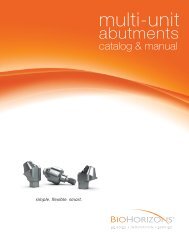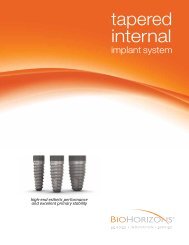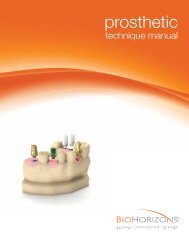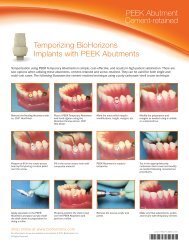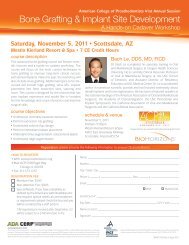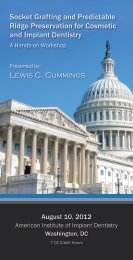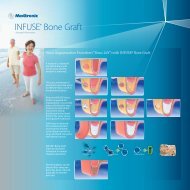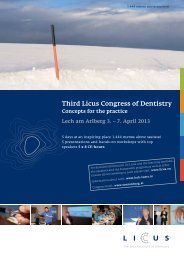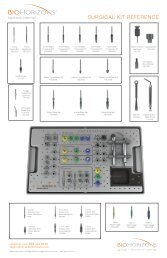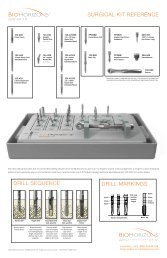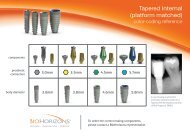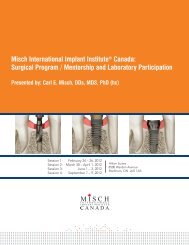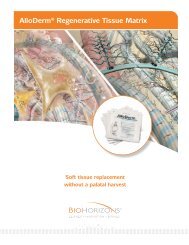Virtual Implant Placement 2.1 - BioHorizons
Virtual Implant Placement 2.1 - BioHorizons
Virtual Implant Placement 2.1 - BioHorizons
- No tags were found...
Create successful ePaper yourself
Turn your PDF publications into a flip-book with our unique Google optimized e-Paper software.
PILOT COMPU-GUIDEPilot Drill SetPurpose: Initiates osteotomy using the Pilot Compu-Guide.• Fixed circular ring acts as a definitive drill stop• Osteotomy to desired depthThe Pilot Drill Set includes four Pilot Drills in varyinglengths that provide implant depth for the initial2mm pilot osteotomy. The Drilling Report that isaccompanied with the Pilot Compu-Guide indicatesthe appropriate drill to be used per implant site.17mm21mm24mm28mm122-017122-021 122-024 122-028Important ConsiderationsPeri-operative oral rinses with a 0.12% Chlorhexidine Digluconate solution have been shown to significantlylower the incidence of post-implantation infectious complications. 2 A preoperative 30-second rinse isrecommended, followed by twice daily rinses for two weeks following surgery.Drilling must be done under a constant stream of sterile irrigation. A pumping motion should be employed toprevent over-heating the bone. Surgical drills and taps should be replaced when they are worn, dull, corrodedor in any way compromised. <strong>BioHorizons</strong> recommends the replacement of drills after 12 to 20 osteotomies. 3Pilot Drill Set CleaningThe Pilot Drill Set is provided non-sterile and must be cleaned and sterilized prior to use following theassociated Instructions for Use. Always remove instruments from packaging prior to sterilization, and removeand discard packaging materials used to stabilize and secure instruments during shipment. Double-check allsurgical instruments to ensure their functionality prior to surgery. Backup sterile drills are also recommended.Caution: The use of hydrogen peroxide or other oxidizing agents will cause damage to the surfaceof the instruments. Towel- or air-dry all instrumentation before sterilizing. Drills and taps should bereplaced when wear is noticed, such as a decrease in cutting efficiency or when signs of discolorationappear. Drills should be replaced after approximately 12 to 20 osteotomy cycles, depending on thebone density. 3Proper testing, cleaning and calibration of sterilization equipment should occur frequently to assure that theunits are in proper working order. Equipment operating conditions vary and it is the responsibility of eachdental office to ensure that the proper sterilization technique for instrumentation is followed.22



